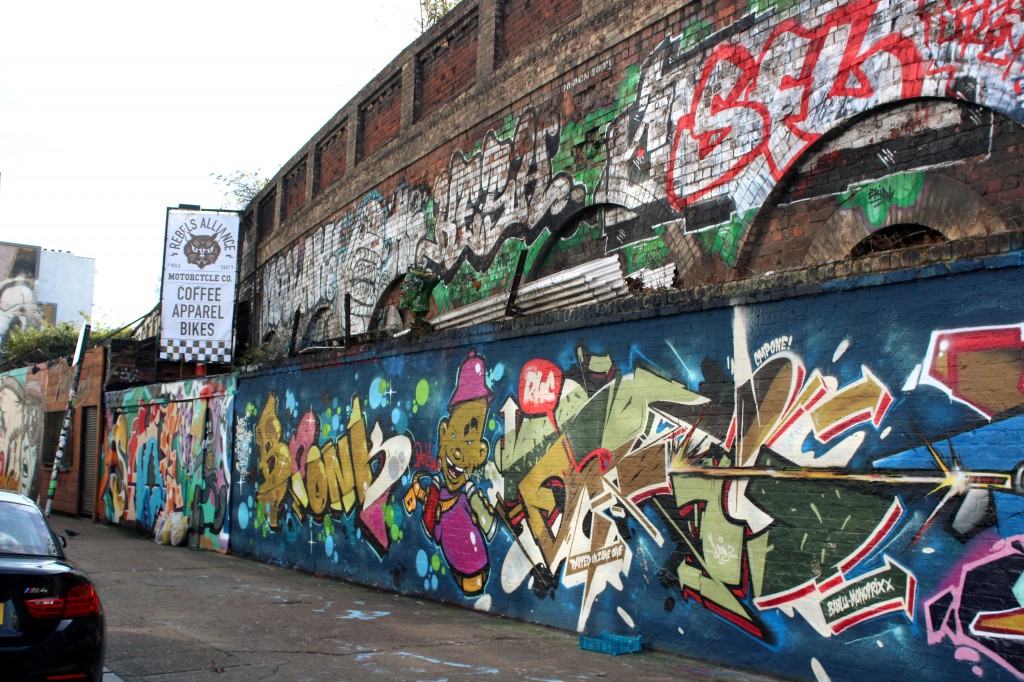 |
| One of the many art-covered walls of Shoreditch |
We were fortunate to have a really knowledgeable tour guide; he not only pointed out and explained the street art, but also gave historical information about the area. Apparently, the East End used to be pretty rough around the edges and was generally an undesirable place to live. It was poor and run-down with lots of abandoned buildings and warehouses, making it the ideal place for street artists to display their work. As creatives began to flock to the East End, it soon became the epicenter of London’s street art scene, which made it a much more attractive area to live for young working-class adults. Today, it is an up-and-coming vibrant neighborhood that has much to offer to Londoners.
Another aspect of the East End is its strong influence of the Bangladeshi community. As you walk along the area’s most popular street, Brick Lane, you can see countless Bangladeshi restaurants and cornershops. Street signs are even labeled with a Bangladeshi translation underneath its English name. The street art also reflects this influence; a piece by the artist Stik shows two stick figures holding hands, with one wearing a hijab.
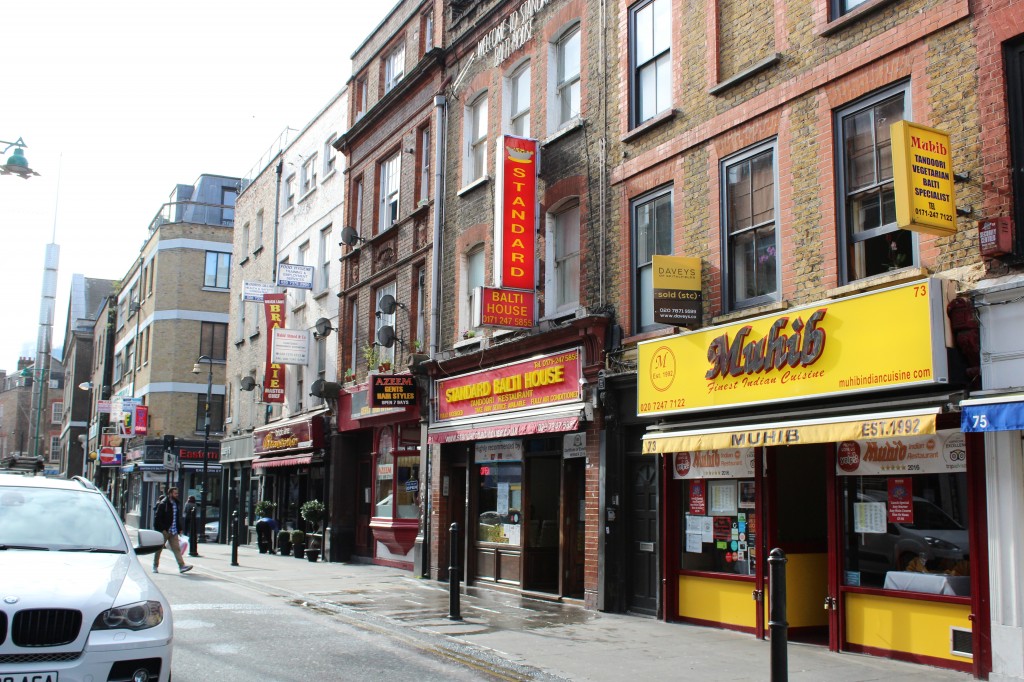 |
| A view of the Bangladeshi restaurants along Brick Lane |
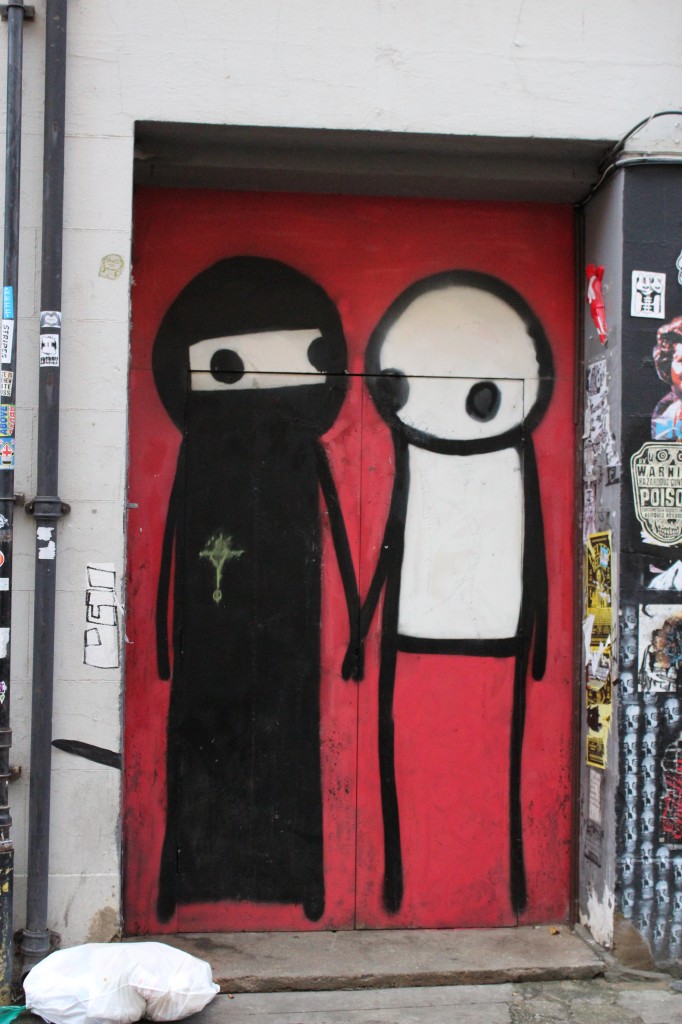 |
| Street art by Stik |
This kind of connection to the community was common in the street art we saw; our tour guide explained how the only art that sticks around and isn’t sprayed over is that which connects with and is appreciated by the locals. An example of this is a portrait of Charlie Burns, painted by artist Ben Slow. Charlie Burns was born in 1915, and lived on Bacon Street in Shoreditch his whole life as a paper merchant. By the end of his life, he spent his days sitting in his car, watching the everyday city life of Brick Lane as it changed before his very eyes. He became a local legend; and is still remembered today by his portrait on Bacon Street, which remains untouched by graffiti tags.
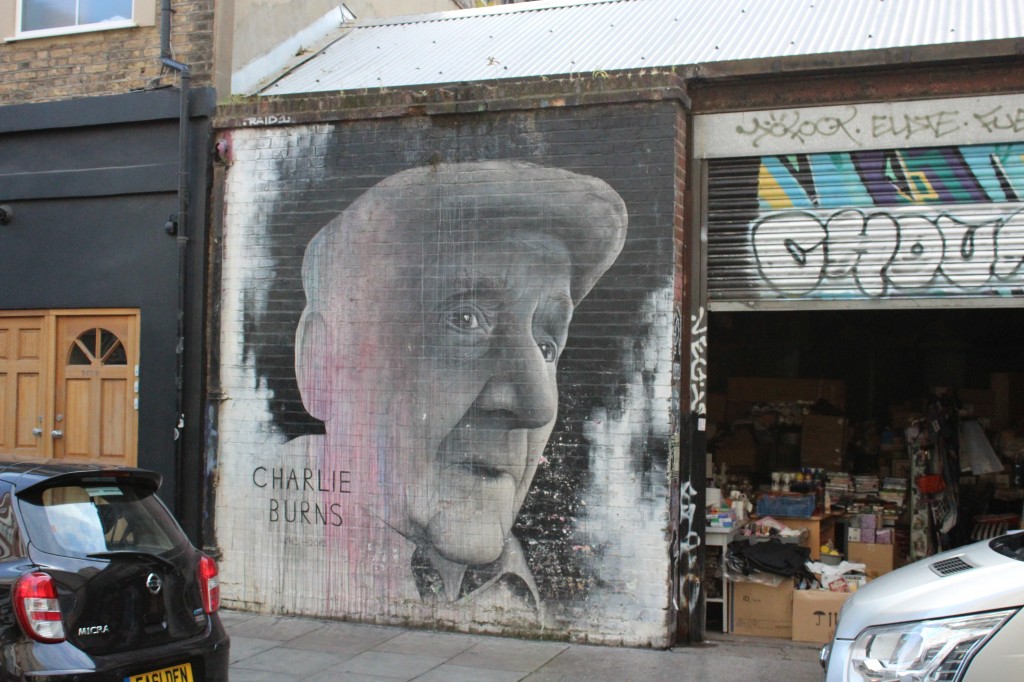 |
| Tribute to local legend Charlie Burns, by artist Ben Slow |
This kind of respect for street art is uncommon; most paintings do not last long before they are removed, painted over, or covered with tags. However, if you are quick enough, you may be able to catch a painting before this happens. Our tour group was fortunate enough to come across a painting by French artist Bault, which was so recent that the paint was still wet.
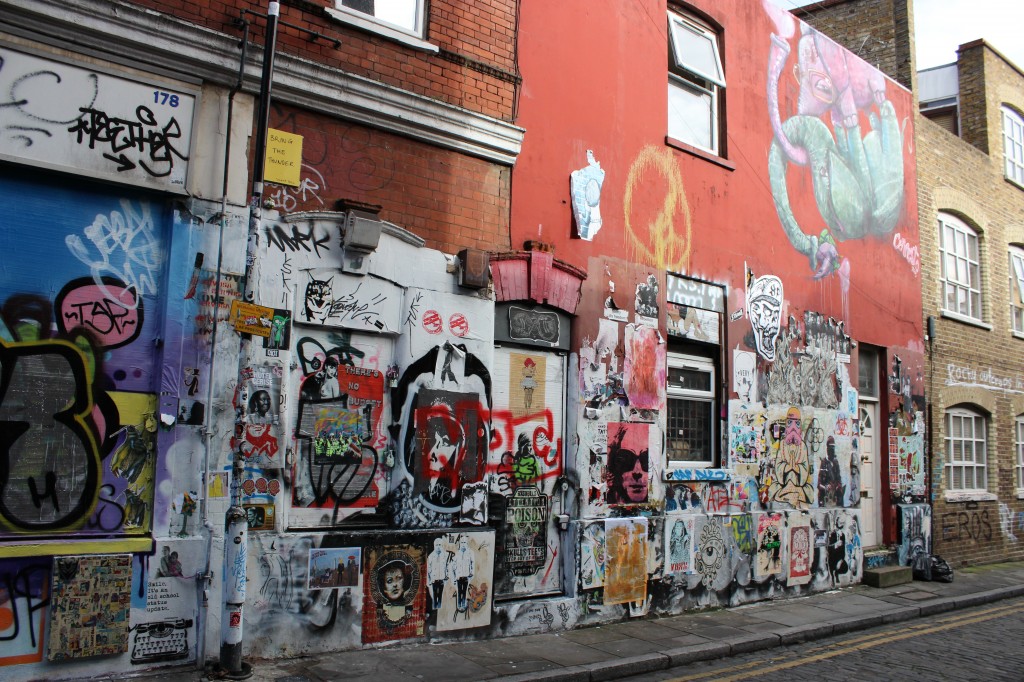 |
| An example of the art being covered with tags |
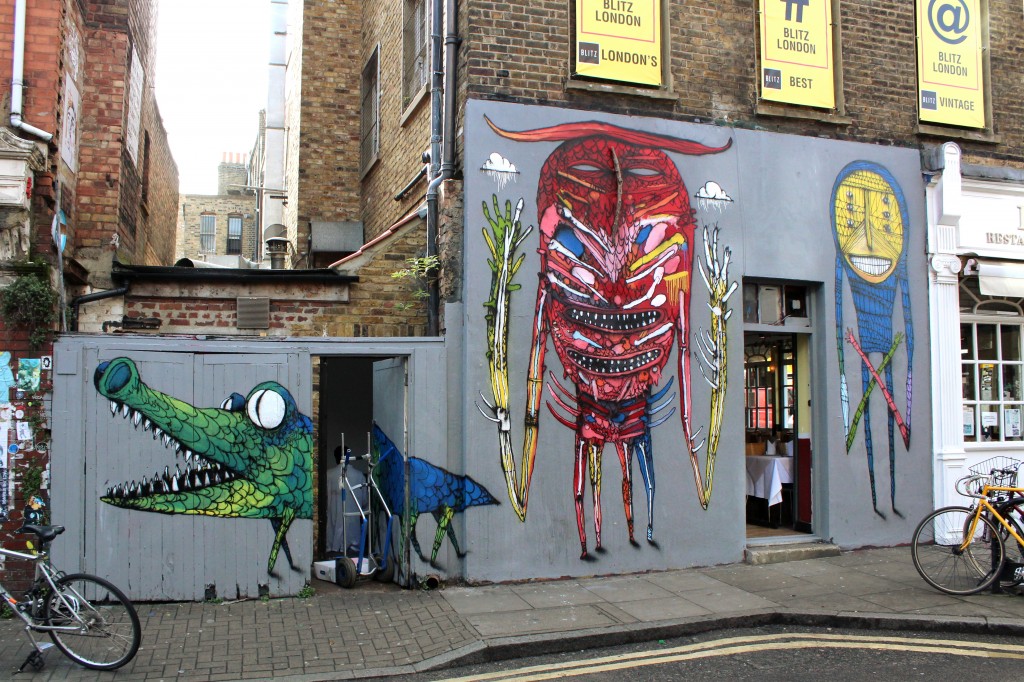 |
| Interesting creatures by French artist Bault |
This shows just how active the street art scene is in Shoreditch; every day artists come from all over the world to display their works. Walking around Shoreditch is kind of like having a free entry to a modern art museum, giving you new interesting art nearly every turn you make. And even with the incredible amount of art that I saw on this tour, I know I’ve only just scratched the surface.
James L. is the Fall 2016 CEA MOJO in London, England. He is currently a senior studying Business Management at West Chester University of Pennsylvania
All factual information presented in this blog was taken from a tour by Alternative London on October 12, 2016







